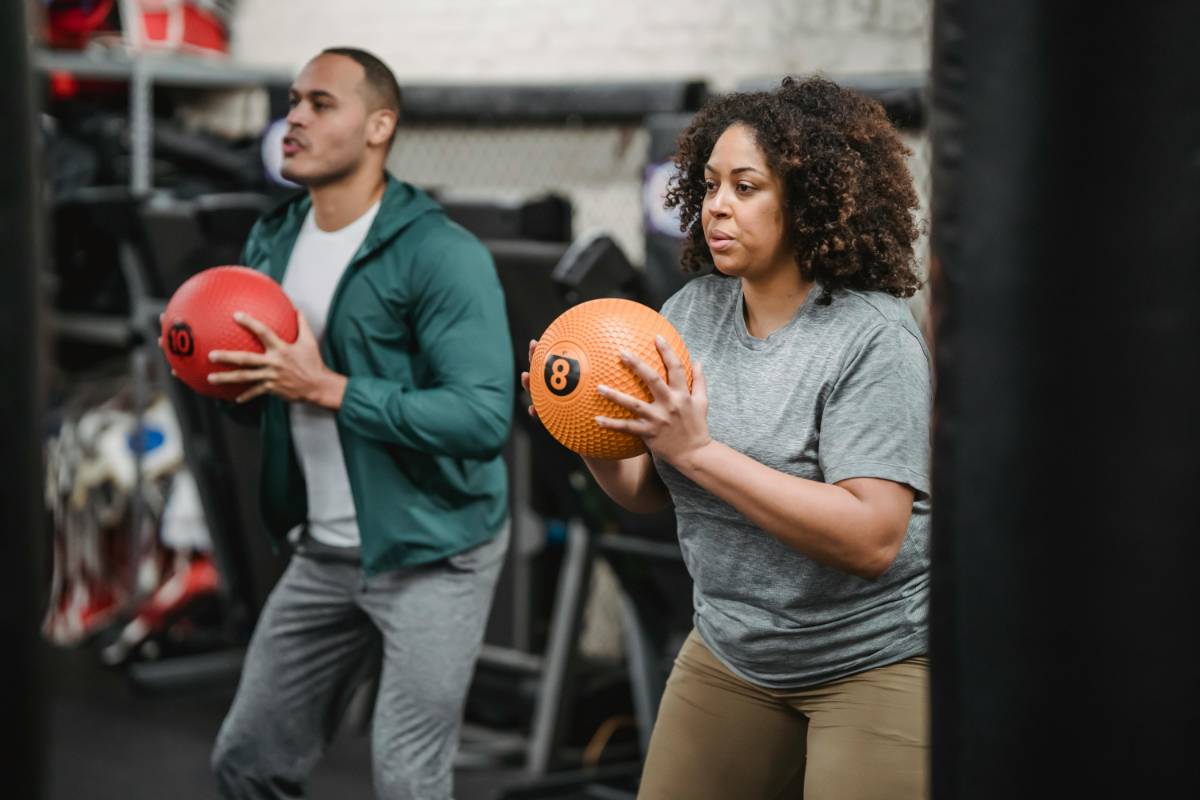How to Maximize Calorie Burn with Cardio Workouts

2 min read
|02 Oct 2025Cardiovascular exercise is a powerful tool for burning calories and achieving weight loss or maintenance goals. However, not all cardio workouts are created equal when it comes to maximizing calorie burn. By optimizing your cardio routine with the right strategies, you can enhance the effectiveness of your workouts and achieve better results. In this article, we'll explore various methods to maximize calorie burn during cardio workouts, including workout intensity, duration, and exercise variety.
Understanding Calorie Burn
Calorie burn during cardio exercises depends on several factors, including exercise intensity, duration, body weight, and individual metabolism. Here’s a brief overview:
Exercise Intensity: Higher intensity workouts generally burn more calories per minute compared to lower intensity workouts. Intensity can be measured by heart rate, perceived exertion, or pace.
Duration: Longer workouts increase total calorie expenditure, but it’s important to balance duration with intensity for optimal results.
Body Weight: Heavier individuals tend to burn more calories during exercise due to the increased energy required to move a larger mass.
Individual Metabolism: Metabolic rate varies from person to person, affecting how efficiently calories are burned.
High-Intensity Interval Training (HIIT)
One of the most effective methods to maximize calorie burn is through High-Intensity Interval Training (HIIT). HIIT involves alternating between short bursts of high-intensity exercise and periods of lower intensity or rest. Here’s how HIIT works:
Benefits:
Increased Calorie Burn: HIIT can lead to a higher calorie burn both during and after the workout due to the intensity of the exercise.
Improved Metabolic Rate: HIIT boosts your metabolic rate for hours after the workout, a phenomenon known as excess post-exercise oxygen consumption (EPOC).
Time Efficiency: HIIT workouts can be completed in a shorter amount of time compared to traditional cardio, making them ideal for busy schedules.
How to Incorporate HIIT:
Alternate between 20-30 seconds of high-intensity exercise (e.g., sprinting, jumping) and 40-60 seconds of rest or low-intensity exercise (e.g., walking). Repeat for 15-30 minutes, depending on your fitness level.
Steady-State Cardio
Steady-state cardio involves maintaining a consistent, moderate intensity throughout the workout. While not as intense as HIIT, steady-state cardio has its own benefits:
Benefits:
Sustained Calorie Burn: Steady-state cardio can effectively burn calories over longer durations and is less taxing on the body compared to HIIT.
Lower Risk of Injury: The lower intensity of steady-state cardio reduces the risk of injury and is suitable for individuals who are new to exercise or have joint concerns.
How to Incorporate Steady-State Cardio:
Engage in activities like jogging, cycling, or brisk walking at a moderate intensity for 30-60 minutes. Aim for 3-5 sessions per week to build endurance and burn calories.
Interval Training
In addition to HIIT, interval training can enhance calorie burn by incorporating varied intensity levels throughout the workout:
Benefits:
Varied Intensity: Interval training alternates between high and low-intensity periods, increasing the overall calorie burn and improving cardiovascular fitness.
Enhanced Fat Loss: Intervals can boost fat oxidation and improve body composition by increasing the calorie burn both during and after exercise.
How to Incorporate Interval Training:
Choose an exercise like running or cycling. Alternate between 1-2 minutes of high intensity and 2-3 minutes of lower intensity. Repeat for 20-40 minutes, adjusting based on your fitness level.
Incorporating Strength Training
Combining strength training with cardio can further enhance calorie burn:
Benefits:
Increased Muscle Mass: Strength training builds muscle, which in turn increases resting metabolic rate and overall calorie expenditure.
Elevated Post-Exercise Calorie Burn: The afterburn effect from strength training can contribute to additional calorie burn post-workout.
How to Incorporate Strength Training:
Add strength exercises like squats, lunges, and push-ups to your cardio routine. Consider circuit training, which combines cardio and strength exercises in a single workout to maximize calorie burn.
Optimal Workout Duration and Frequency
To maximize calorie burn, balance workout duration and frequency with intensity:
Duration: Aim for at least 150 minutes of moderate-intensity or 75 minutes of high-intensity cardio per week, as recommended by the American Heart Association. Adjust based on your fitness goals and schedule.
Frequency: Incorporate cardio workouts 3-5 times per week. Combine different types of cardio and include rest days to prevent overtraining and promote recovery.
Tracking and Adjusting Your Routine
Monitoring your progress and making adjustments is key to optimizing calorie burn:
Track Your Workouts: Use a fitness tracker or app to monitor workout intensity, duration, and calorie expenditure. This helps track progress and adjust your routine as needed.
Adjust Intensity: As your fitness level improves, gradually increase the intensity of your workouts to continue challenging your body and maximizing calorie burn.
Variety: Incorporate different types of cardio exercises and workout formats to prevent plateaus and keep your routine engaging.
Final Thoughts
Maximizing calorie burn with cardio workouts involves employing strategies such as HIIT, steady-state cardio, interval training, and combining cardio with strength training. By understanding the principles of calorie burn, optimizing workout intensity, and making adjustments based on progress, you can enhance the effectiveness of your cardio routine and achieve your fitness goals. Remember to stay consistent, listen to your body, and enjoy the process of improving your fitness and overall health.
MORE ARTICLES

5 min read | 03 Oct 2025
High-Intensity Interval Training (HIIT) Explained
High-Intensity Interval Training (HIIT) is a popular and effective workout strategy that involves short bursts of intense exercise alternated with periods of rest or low-intensity activity. This training method has gained widespread popularity for its efficiency and effectiveness in improving cardiovascular fitness, burning calories, and enhancing overall athletic performance. Whether you’re a seasoned athlete or a beginner looking to get fit, understanding the fundamentals of HIIT can help you maximize your workouts and achieve your fitness goals.

2 min read | 02 Oct 2025
The Importance of Flexibility and Stretching in Your Fitness Routine
Flexibility and stretching are often overlooked components of a well-rounded fitness routine, yet they play a crucial role in maintaining overall health and enhancing physical performance. Incorporating flexibility exercises and stretching into your fitness regimen can provide numerous benefits, from improving range of motion to reducing the risk of injury. Here’s a comprehensive look at why flexibility and stretching are important and how you can effectively integrate them into your routine.

4 min read | 01 Oct 2025
How to Get Started with Cardio Exercises
Cardiovascular exercises, or cardio, are a fundamental part of a balanced fitness routine and offer numerous benefits for overall health and well-being. If you’re new to cardio or looking to enhance your current routine, getting started can be straightforward with the right approach. Here’s a guide to help you begin your journey with cardio exercises and make the most of your workouts.

3 min read | 30 Sep 2025
The Benefits of Strength Training for Weight Loss
When it comes to weight loss, many people focus primarily on cardio exercises like running or cycling. While cardiovascular exercise is an important component of a balanced fitness routine, strength training offers unique benefits that can significantly enhance your weight loss efforts. Here’s a closer look at how strength training can contribute to weight loss and why incorporating it into your fitness routine is a smart choice.

3 min read | 29 Sep 2025
Creating an Effective Home Workout Routine
Creating an effective home workout routine can be a convenient and flexible way to stay fit without the need for a gym membership or specialized equipment. Whether you're a beginner or a seasoned fitness enthusiast, designing a routine that fits your goals and lifestyle is essential. Here are some steps and tips to help you develop an effective home workout routine that you can stick with.

2 min read | 28 Sep 2025
How to Incorporate More Fruits and Vegetables into Your Diet
Incorporating more fruits and vegetables into your diet is one of the easiest ways to boost your overall health. Packed with essential vitamins, minerals, and antioxidants, they contribute to better digestion, improved heart health, and increased energy levels. However, for many people, adding more fruits and vegetables to their diet can be challenging. Here are some practical tips to help you increase your intake of these nutritious foods.
RECENT POSTS
1
Healthy Eating on a Budget: Tips and Tricks
4 min read | 14 Nov 20252
How to Transition to a Plant-Based Diet
5 min read | 13 Nov 20253
The Importance of Fiber in Your Diet
4 min read | 12 Nov 20254
10 Healthy Snacks You Can Make in Under 10 Minutes
4 min read | 11 Nov 20255
Understanding Macronutrients: Carbs, Proteins, and Fats
3 min read | 10 Nov 20256
How to Meal Prep for a Week of Healthy Eating
4 min read | 09 Nov 2025MORE POSTS

The Importance of Cleansing Your Face Before Bed
4 min read | 24 Sep 2025
Anti-Aging Skincare Tips for a Youthful Glow
2 min read | 23 Sep 2025
Natural Remedies for Acne-Prone Skin
4 min read | 22 Sep 2025
How to Create an Effective Skincare Routine
4 min read | 21 Sep 2025
Choosing the Right Moisturizer for Your Skin Type
4 min read | 20 Sep 2025
